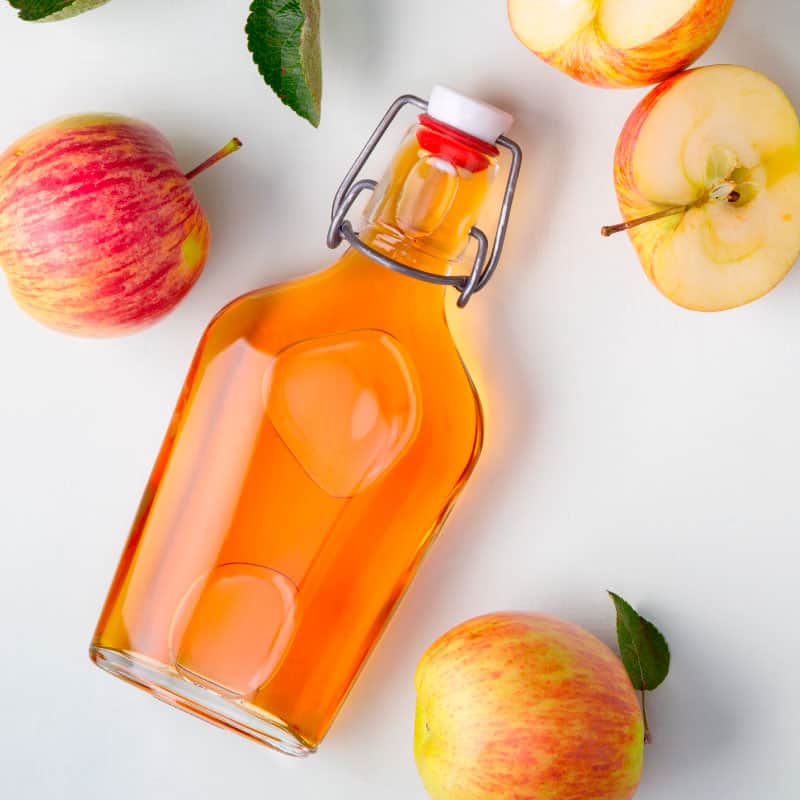This Dr. Axe content is medically reviewed or fact checked to ensure factually accurate information.
With strict editorial sourcing guidelines, we only link to academic research institutions, reputable media sites and, when research is available, medically peer-reviewed studies. Note that the numbers in parentheses (1, 2, etc.) are clickable links to these studies.
The information in our articles is NOT intended to replace a one-on-one relationship with a qualified health care professional and is not intended as medical advice.
This article is based on scientific evidence, written by experts and fact checked by our trained editorial staff. Note that the numbers in parentheses (1, 2, etc.) are clickable links to medically peer-reviewed studies.
Our team includes licensed nutritionists and dietitians, certified health education specialists, as well as certified strength and conditioning specialists, personal trainers and corrective exercise specialists. Our team aims to be not only thorough with its research, but also objective and unbiased.
The information in our articles is NOT intended to replace a one-on-one relationship with a qualified health care professional and is not intended as medical advice.
9 Weight Loss Tips for Women (for 9 Common Problems)
March 14, 2023

While losing weight fast is tough for anyone, there are several factors that can make it extra challenging for women. A study published in the journal JAMA found that between 2013 and 2014, obesity among men was 35 percent and 40 percent among women. And between 2005 and 2014, while men’s rates of obesity essentially plateaued, the number of women who were very obese steadily increased.
While obesity can take a toll on your self-esteem and confidence, it isn’t just about the way you look. Obesity contributes to premature aging and death by increasing the risk for developing life-threatening diseases such as diabetes, heart disease and cancer.
Meanwhile, simply being overweight could be cutting your lifespan short. One large study that used data from the 20 different studies showed that while death rates among nonsmokers without pre-existing heart disease or cancer was lowest for those with a BMI of 22.5 to 24.9, that risk of death went up 31 percent for every five-unit increase in BMI — up to a BMI of 49.9, the highest BMI included in the study.
It can be a touchy subject but if you’ve got some extra weight, it’s time to take steps to change that and figure out what the best weight loss tips for women are (such as losing weight after 40). After all, reaching a healthy weight is vital for protecting your health, both today and as you age.
Like many other overweight and obese people, particularly women, you may have tried time and time again to lose weight with little to no success. If may feel discouraged, here are some key weight loss tips involved in women’s weight loss you might not know about — and that could make all the difference.
Let’s explore the nine most common reasons why women struggle to lose weight alongside the weight loss tips that hopefully will remove the struggle!
1. You’re eating the wrong foods
Take a walk through the supermarket, and you’ll be assaulted with aisle after aisle of low-fat and no-fat foods, “healthy” chips and cookies and juices and sodas galore. You likely already know that if you want to lose weight, cutting out processed foods and so-called ultra-processed foods — sweets is the first and most obvious step. But those healthy-sounding options can be just as bad, too.
When you eat foods that are low- or no-fat, other ingredients are added in so that the food tastes like its full-fat counterpart. Those extra ingredients don’t add in the nutrients that have been stripped away, however, so you end up craving more because, despite the fact that you just ate, your body is still lacking in the vital nutrients it needs. You end up eating more calories than you would have if you’d just eaten the full-fat product.
Sugar is another culprit in healthy foods. “Good” foods like yogurt, salad dressings and tomato sauce are often packed with sugar, leading to more cravings, headaches and more. It’s also one of the reasons you’re struggling to lose weight.
How to Know:
Look through your refrigerator and pantry and take stock of what’s in there. If most of your foods are boxed or in bags, it’s time to transition to more whole foods. Read the labels, too. How much sugar is in your favorite jar of pasta sauce? Are those crackers loaded with preservatives?
What to Do:
First, eliminate or seriously cut back on the fake foods. When possible, choose real foods instead. Among weight loss tips, healthy food swaps are absolutely essential. That means an apple instead of apple juice, orange slices instead of something orange-flavored. If you’re craving something, skip the no-fat version that will likely leave you wanting more, and instead measure out a serving instead so you can enjoy the food without going nuts.
If you do buy snacks and other convenience products like salad dressings, read the ingredients list and nutrition facts. Buy brands that are organic and free of pesticides and dyes. Skip the flavored version of foods like yogurt and add your own fresh fruit and honey to it. And when possible, make your own foods. Spend a few hours meal prepping on the weekends to make staples you can eat throughout the week, like sauce, dressings and healthy on-the-go snacks.
2. You’re doing the wrong type of exercise
If you’re spending hours at the gym but aren’t seeing results, you’re probably doing the wrong type of exercise. Women often focus their exercise efforts on cardio done at a moderate intensity, like jogging. And while that type of exercise is good for your heart, if you’re trying to lose weight, it’s time to kick it up a notch.
Luckily, that doesn’t mean you need to dedicate even more time exercising. In fact, high-intensity interval training (HIIT) workouts can slash the time commitment while boosting results. HIIT workouts last about 20 minutes and combine bursts of super-intense exercise with slower recovery phases. This type of workout has been found to help people lose more fat once the workout is over, even though they burn less calories during the workout (since workouts are shorter) and also build muscle, rather than break it down the way conventional cardio does.
If you shy away from weights at the gym, you’re also thwarting your own weight loss efforts. Women often avoid strength training because of a fear they’ll bulk up. That’s a mistake, because strength training is what gives you those well-defined muscles — you’d have to become a professional bodybuilder to get anywhere near bulking up.
More importantly, though, strength training does wonders for your body. It helps make bones denser, critical because our bones become weaker as we age, increasing the risk of osteoporosis — of the 10 million Americans suffering from the disease, 80 percent are women. Strength training helps build lean muscle tissue, helping you lose more weight all over — including being a key way to lose belly fat. It also reduces your risk of type 2 diabetes and cardiovascular disease.
How to Know:
This is pretty easy to determine — you know what you’re doing at the gym!
What to Do:
If HIIT workouts and strength training aren’t part of your exercise routine, it’s time to add them in. Instead of just running or walking on the treadmill do bursts of high intensity running or sprinting followed by a cool down. For example, you can sprint full force for 30 seconds, slow down and walk for two minutes, then rev it up and sprint again for 30 seconds. Continue this routine for 10 to 20 minutes. If your gym offers Tabata workouts, check those out, too.
For strength training, working with a trainer for a session or two can be helpful to acquaint yourself with dumbbells and the types of exercises you can do, but you don’t even need to use extra weight. A great weight loss tip for women is to add bodyweight exercises like push-ups and lunges to your workouts; they’re super effective and you can do them anywhere. Pilates and more vigorous yoga classes are a great option, too.
3. You have a thyroid problem
Life is all about balance and, when it comes to your body functioning properly, this couldn’t be more true. Our body operates on a delicate balance of chemicals that it must maintain to function properly.
Some of the most important chemicals when it comes to weight and metabolism are the thyroid hormones T3 and T4, aka triiodothyronine and thyroxine.
These hormones can be thrown out of whack by many issues. From a diet with too much or too little iodine, to toxicity from amalgam fillings, to an undiagnosed medical condition, the thyroid can produce too much or too little T4, impacting your metabolism.
How to Know:
If you’re suffering from too much T4, or hyperthyroidism, you might find yourself experiencing these symptoms:
- Nervousness
- Insomnia
- Racing heart
- Unexplained weight loss
- High amounts of perspiration
- Muscle weakness
- Multiple bowel movements
- Thin, brittle hair
Hypothyroidism, or too little T4, can produce the following symptoms:
- Fatigue
- Dry hair, skin
- Unexplainable weight gain
- Constipation
- Muscle weakness and discomfort
If you’re experiencing one or more of these symptoms, schedule an appointment with your health care practitioner.
The three most commonly used tests to determine if you have a thyroid condition are blood tests, a thyroid scan and the radioactive iodine uptake test. Your doctor can determine which one is best after a review of your specific conditions.
What to Do:
Instead of turning to hormone replacement therapies with the use of pharmaceuticals, natural hormones using animal hormones or, in extreme cases, surgery, first look at any nutritional deficiencies you may have that are contributing to an imbalance, like iodine or toxicity.
4. You have a hormone imbalance
It’s not just the thyroid hormones that can impact your metabolism and weight. Cortisol, also known as the stress hormone, can block your attempts to lose weight, too. This “fight or flight” hormone increases your appetite, makes you crave loads of carbs, and keeps fat in the belly region, one of the reasons you can’t lose weight in that area.
How to Know:
While you can get tests to evaluate the cortisol level in your blood, only you can determine your own innate level of stress. Take some time to evaluate if you are living in a constant (or close to constant) state of stress. You might also notice increased anxiety levels, mood swings, trouble sleeping, fatigue (including feeling tired but unable to wind down) and high blood pressure.
Aside from rising stress levels, other causes of a cortisol imbalance can be the use of corticosteroid medications like hydrocortisone, prednisone and anti-inflammatory medications, nutrient deficiencies and hyperthyroidism.
What to Do:
The best way to lower your cortisol levels is by decreasing stress. While it’s easier said than done, weight loss tips like this one involve you simply taking the time to put yourself and your health first. Practicing saying “no” to events and things you know will cause you stress, carve out time to exercise, set aside some time daily — even just 5 minutes — to meditate or practice gratitude and learn to recognize when you’re feeling extra worn out and need a time out.

5. Your prescription meds are making you fat
Are you on prescription medications? They could be the reason you can’t lose weight. Certain medications can cause weight gain as a side effect, whether from fluid retention, changing your appetite or an increase in hormones. Among the chief offenders are birth control pills, antidepressants, angiotensin-receptor blockers and steroids.
How to Know:
If you’re on one of these prescription medications and, despite all your best efforts, you’re struggling to lose weight, it might be time to speak with your doctor.
What to Do:
If possible, before starting a prescription medication, jot down your weight and then check in on the scale after two weeks. If you notice weight gain, it’s easier to nip it in the bud early on.
However, if you’re already on medication and think it could be hampering weight loss efforts, speak with your doctor about your options. It may be possible to transition to a more natural option, like a natural form of birth control, coming up with a plan to transition off medication or simply trying an alternative that’s not known to cause weight gain.
6. You’re not getting enough sleep
Hitting the snooze button several times in the morning or spending too much time scrolling through your social media feeds while in bed? If you’re skimping on sleeping time, you’re not just yawning through the day, but also hurting your attempts to lose weight.
One review found that people who sleep between 3.5 and 5.5 hours a night consume nearly 385 more calories the next day when compared to those who sleep between 7 and 10 hours. Sleep is critical for our bodies to repair and function properly. When you consistently don’t get enough sleep, not only are you more likely to gain weight, but you’re also at a higher risk for chronic diseases, anxiety, irritability and more.
How to Know:
Take note of what time you’re going to bed, what time you’re waking up and the quality of your sleep. If you’re consistently sleeping for under seven hours, it’s time to make some changes.
What to Do:
If you’re having trouble getting to bed, look for natural sleep aids. To help stick to these strategies, consider these sleep tips your weight loss tips as well. Shutting off electronics an hour before bedtime, limiting caffeine intake in the afternoons, avoiding simple carbs in the evenings and journaling can all help you unwind so you get enough rest.
7. You’re eating your emotions
After a long day at work, do you unwind with a glass or two of wine? Do you find yourself reaching for a pint of ice cream when you’ve had a stressful day? This emotional eating is likely holding you back from your weight loss goals.
When you’re eating to deal with your emotions, like anxiety, stress or unhappiness, you’re likely not reaching for carrot sticks and blueberries, but carbohydrates, processed foods and even alcohol. Those calories eventually add up and, at the same time, you’re avoiding learning how to deal with difficult emotions and situations. It’s pretty much a lose-lose situation.
How to Know:
Think about the times when you pig out on unhealthy foods. Are you stressed, distracted, bored? You might be emotionally eating.
What to Do:
Practicing mindful eating can be really helpful if you’re an emotional eater. Check in with yourself to see if you’re actually hungry or just avoiding that assignment that’s hanging over your head. If you’re going to eat, sit down and give your food your full attention. No eating out of the bag, either. If you’re going to snack on some chips, but them in a bowl so you can see how much you’re eating. That might help curb your cravings.
Of course, you want to get to the bottom of why you’re not feeling so hot. One study found that practicing relaxation techniques helped obese women who were emotional eaters lose weight over the course of three months, along with helping them reduce depression and anxiety. Engaging in other activities that can help you relax are a better option than emotional eating.
Another study found that when women increased their frequency of workouts, they saw changes in their self-regulation around food, significantly improved their moods and were able to exercise more. Instead of pouring a glass of wine or snacking all night, try hitting a yoga class or going for a long walk instead.
8. You’re eating too many healthy foods
Good-for-you foods are delicious, but too much of a good thing is possible. While foods like avocados, nuts and full-fat dairy are great for your health, they’re also pretty high in calories. If you’re eating a lot of these foods, you might be consuming more calories than you realize.
Of course, on high-fat diets like the ketogenic diet, your meals will consist largely of fatty foods. What we’re talking about is following a standard diet that’s also packed with high-fat foods.
How to Know:
If your diet is packed with healthy fats like eggs, avocados, butter and MCT oil and you’re not following a low-carb, high-fat diet, you might be overdoing the fats.
What to Do:
If you’re already enjoying and eating foods high in fat along with protein, you might want to consider going on the keto diet. It’s been proven to be more effective at weight loss than a low-fat diet, and you’ll likely have an easy time transitioning to it. Among these weight loss tips, going keto is the diet that produces the quickest results alongside significant health changes.
Otherwise, there’s no need to eliminate these healthy foods from your diet. Instead, it’s important to be mindful of serving sizes and sticking to one or two of these foods a day. For example, if you added a scoop of almond butter to your morning smoothie, skip the nuts in the afternoon and replace them with something else. And consider counting calories, such as using an app to record your meals and snacks.
9. You have a food allergy
Do you find that you feel constantly bloated, your skin is acting up or your tummy constantly feels “off,” but you’re just not sure why? You could have a food allergy or sensitivity.
About 9.1 million Americans and 5.9 million children suffer from a food allergy. And these figures don’t include people who are sensitive to certain ingredients, are intolerant to foods or don’t realize they have a problem at all, so the real numbers are likely much higher.
If you’re allergic or sensitive to a certain ingredient and continue eating it, you’re likely to struggle with losing weight. The food is triggers inflammation, as your body fights against it. As you continue eating the same food that’s making you ill, the inflammation continues, making you a lot more susceptible to extra pounds and other health issues.
How to Know:
If you have a skin condition that doesn’t seem to improve, digestion issues or a general feeling of “meh,” you might have a food sensitivity or allergy.
What to Do:
An elimination diet is a good way to see if you might have a food allergy. During an elimination, you’ll avoid the top foods that people are allergic to, including eggs, soy, gluten, dairy and nuts.
After 30 days on the diet, you’ll slowly add in one of the restricted foods — one at a time and for a few days only — to see how your body reacts. At this point, you can continue just avoiding the ingredients you suspect you’re sensitive to, or go to an allergy specialist to receive confirmation and see if there’s anything else you might be allergic to.











